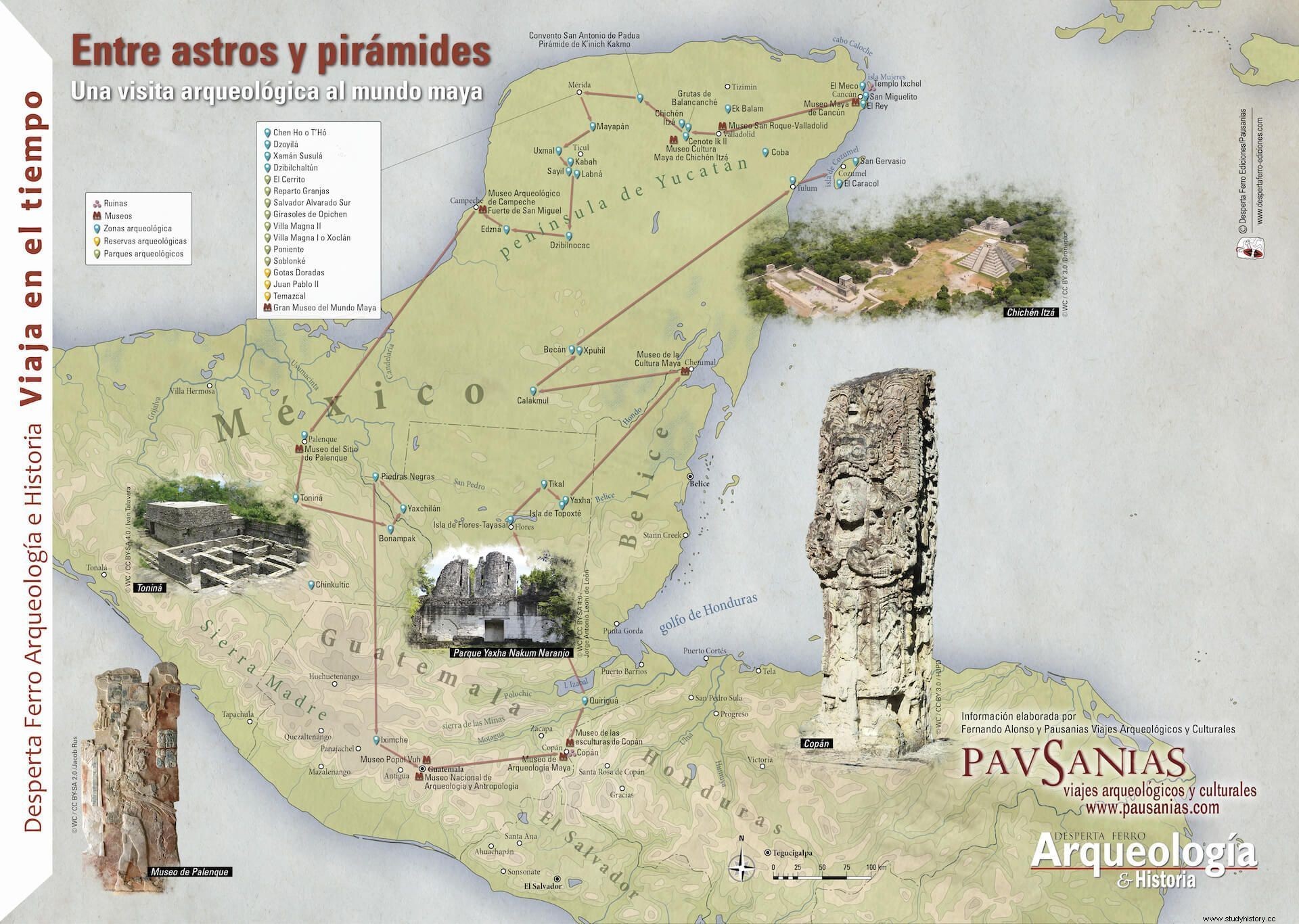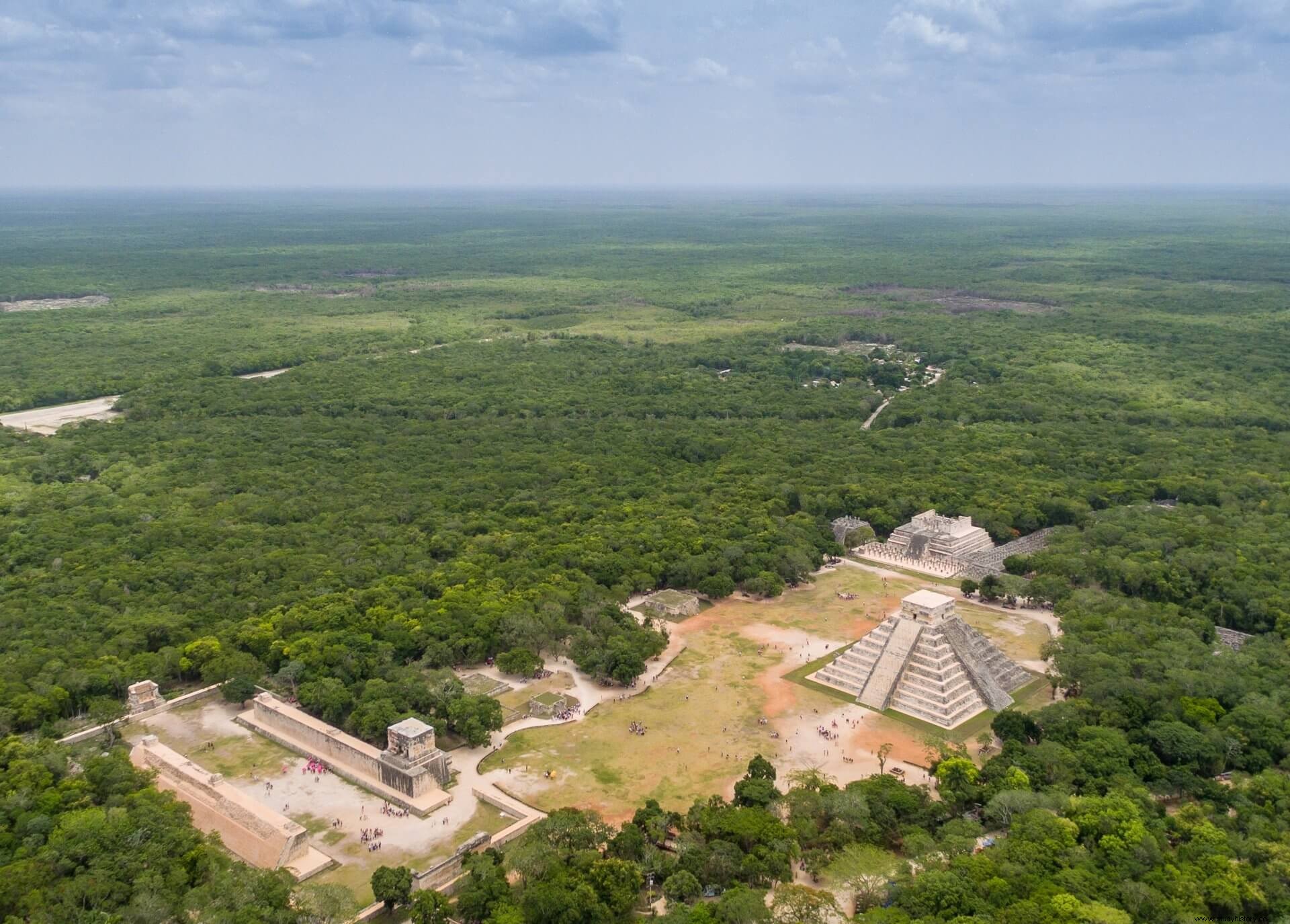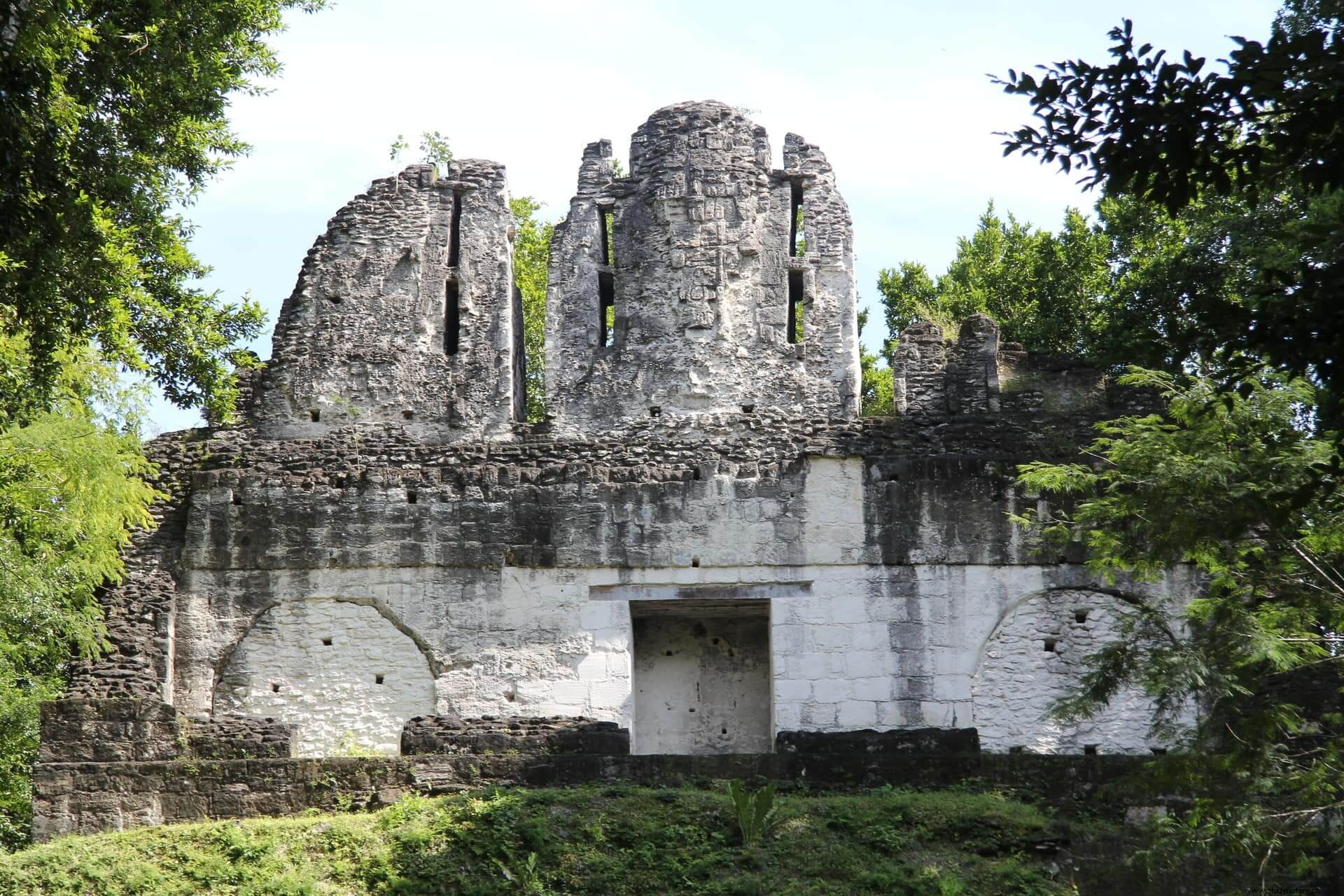
We will begin our archaeological journey to the Mayan world in the current Mexican state of Quintana Roo in the city of Cancún , where you can visit the El Meco Archaeological Zone to the north and the Rey and San Miguelito Archaeological Zones to the south next to the Museo Maya de Cancún , with pieces from the State and other emblematic sites such as Palenque, Chichen Itzá or Comalcalco. In front of the bay of Cancun is the Isla Mujeres –so called because of the pilgrimages in the rituals of the passage of age among Mayan women– at whose southern end are the ruins of the temple of Ixchel , the goddess of fertility to which they took refuge.
We will travel west to reach Valladolid , from where we will access the archaeological zones of Cobá and Ek Balam . The first with its cenotes or gouache linked by sakbes or Mayan roads , its astronomical observatory and the pyramid of Nohoch Mul . The second is famous for a stucco doorway depicting the open jaws of a land monster. In Valladolid we will visit the San Roque Museum , which has archaeological pieces from the region.
Continuing west on our archaeological journey to the Mayan world we will find one of the quintessential Mayan places, the ruins of the city of Chichen Itzá , with the pyramid from El Castillo or from Kukulcán , the Feathered Serpent god, the observatory or Caracol, the so-called Iguana cenote and the one of the Sacrifices (see "Among the gods:the sacred world of the ancient Maya" in Awake Ferro Archeology and History No. 22:The Maya ). Nearby is the Museum of the Mayan Culture of Chichen Itzá , and other places such as the Ik Il cenote or the Balancanché groute , famous for its ancient rituals to promote rain and fertility.

On the way to Mérida, in Izamal the Mayan "yellow city", we can admire an example of syncretism in the convent of San Antonio de Padua directly on the pyramid dedicated to K'inich Kakmo . Merida , the “white city” of the Mayans, contains the recently inaugurated Great Museum of the Mayan World , on the occasion of the end of the Mayan calendar on December 21, 2012, as well as various protected sites in the urban area and its outskirts. We thus have archaeological zones such as Dzibilchaltún , with the structure known as the Temple of the Seven Dolls, astronomically oriented towards the spring equinox, and the Museum of the Mayan People . South of Mérida is the Mayapán Archaeological Zone , which tried to reproduce the splendor of nearby Chichen Itza, with obvious traces of the imminent collapse.
Traveling south along thePuuc route , we will find the archaeological site of Uxmal , with structures as well known as the Quadrangle of the Nuns or the Pyramid of the Magician . Puuc style are the sets of Kabah , with the façade of the rain gods in the Codz Poop house; Sayil , famous for its palace; and Labnah , in which a monumental entrance arch and the building of the Columns stand out.
On our way to the west coast in Campeche we will find ourselves on our archaeological journey to the Mayan world with the ruins of Dzibilnocac and those of Edzná , the latter with a large acropolis, and the Nohochná , a five-story building that combines the functions of a palace and a pyramid. In Campeche, the fort of San Miguel houses the Archaeological Museum with one of the most precious collections of Mayan objects.

In the state of Chiapas, in the middle of the tropical jungle, we find the ruins of the city of Palenque , which stands out for the famous temple of the Inscriptions , final resting place of the 7th century ruler Pakal the Great , whose remains can be admired in the National Museum of Anthropology of Mexico City , leaving a recreation in the Museo del Sitio de Palenque Alberto Ruz. Towards the south in Ocosingo is the Toniná Archaeological Zone , with a large acropolis that combines labyrinths, palaces, stairways and stucco murals. In its museum are the exceptional sculptures of captives.

In the middle course of the Usumacinta, border with Guatemala , we will find in the Natural Park Montes Azules the place of Bonampak , known for its three rooms covered with mural paintings. Only accessible by boat from the river we can admire the ruins of Yaxchilán , with its famous lintels with women from the local elite. Following the course of the river, already on the margin of Guatemala, are the remains of Piedras Negras , whose emblematic pieces such as stela 40, panel 3 or throne 1, must be visited at the National Museum of Archeology and Anthropology from the capital in Guatemala.
Already in Guatemala itself we can visit the Archaeological Zone of Iximché , one of the last Mayan cities to be conquered due to its strategic defensive location. In the capital, in addition to the National Museum of Archeology and Anthropology, there is the Museo Popol Vuh , with one of the most important collections of funerary ceramics. Crossing the border through El Florido, already in Honduras, are the ruins of Copán , with its hieroglyphic staircase and the network of underground tunnels (see «Between the ground and the sky. Notes on the urban planning and architecture of the ancient Maya» in Desperta Ferro Archeology and History No. 23:The Maya ). The Copan Sculpture Museum is located on the site. in front of a recreation of the Rosalila temple and in the nearby town the Mayan Archeology Museum. Returning to Guatemala we arrive at the Archaeological Zone of Quiriguá .

We will continue on our archaeological journey to the Mayan world towards north to Flores where the island is located in the middle of Lake Petén Itzá , where the city of Tayasal was, the last Mayan city conquered in 1697. Further north is the Tikal Archaeological Zone , famous for its tall pyramids. To the southeast in the Yaxha-Nakum-Naranjo National Park , you can access the island of Topoxté by boat , where it is believed that the elite of nearby Yaxha lived, is characterized by its network of roads that connect various structures.

Going back to Mexico, crossing part of Belize, we will arrive to the eastern coast of Chetumal, with its Museum of Mayan Culture , with the interesting museography that reproduces the vision of the Mayan world in three planes (heaven-earth-underworld) united by the ceiba tree. From this point we will enter the interior to the powerful city of Calakmul , which is joined by the nearby Chicanna, Becán and Xpujil. We will end our journey again on the east coast at the site of Tulum on the paradisiacal beach, an important enclave that served as a starting point for pilgrimages to the islands of Cozumel and Mujeres.

